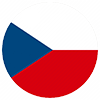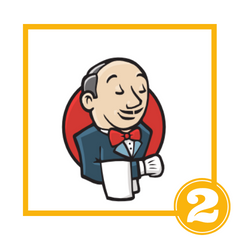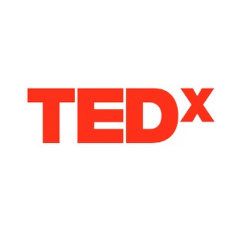The following years in the history of IT Guys are nostalgic for us, because we remember many of the things mentioned. Sometimes, we feel like old-timers. Let’s go back a few decades and recall what was going on in the IT world and how it changed and is still changing our lives to this day. The history of IT is so varied that one cannot help but wonder what the society has achieved and how quickly.
If you’re interested in how the world of IT has evolved since the 1950s, check out our first part of the History of IT Guys, 1950s–1970s to get the history in order.
1980s
The year 1984 was made famous by Ridley Scott, Jobs and Wozniak’s unforgettable Orwellian commercial for the Apple Macintosh.
Sony introduced the 3.5-inch floppy disk to the world, and two years later, together with Phillips, the CD-ROM. Hewlett-Packard began selling a laser printer, Microsoft introduced the word processor simply called Word as well as the first and second Windows, Tim Berners-Lee defined the hypertext system at CERN, and the first Internet domains began to be registered.
The 1980s ushered in the era of fourth-generation computers with a processor and local memory in a single integrated circuit.
Are you interested in the IT field and looking for job positions and opportunities in the IT industry? Whether you are a programmer, developer, tester, analyst, or software architect, contact us and we will find an IT project tailored to your needs from our IT job offers. Take a look at the current available job positions in the IT field. We will help you find new job challenges and opportunities. We look forward to collaborating with you!
Battles between computers and systems
Computer manufacturers wanted to have the best product, but each manufacturer was equally keen to have its own operating system for its platform.
Amiga compiled AmigaOS, Atari ran on TOS, while Xerox developed Star, featuring a graphical interface with clickable windows. The mouse was also used to control MacOS from Apple and NeXTSTEP from NeXT. Even mainframes had their own UNIX-based operating systems – SGI ran IRIX, Sun had Solaris, while IBM used AIX. IBM was developing the TopView operating system for its PC line, but due to lack of time they ended up licensing it from Microsoft. After leaving Apple, Steve Jobs developed the NeXT, a computer that was so far ahead of its time in terms of hardware and software that it was an absolute flop on the market.
Computers and art?
Computers found use in every aspect of human life, even in the arts, where no one expected it. In 1982, the digital vehicles of the sci-fi blockbuster Tron were chasing around, and a year later, the Musical Instrument Digital Interface (MIDI) was introduced, allowing computers to be linked to musical instruments. A few years later, Pixar won the Oscars with Tin Toy.
What about the eighties in Czechoslovakia?
The situation in the country was quite different from the West. Computers were the domain of specialised computing centres at universities and scientific and financial institutions or within the army.
The work was done on 16-bit “ADTs” (Analogue and Digital Technology) produced by ZPA Trutnov and ZPA Čakovice. The centres were associated under the national enterprise PORS (Computing and Organisational Service), while the PVT (Enterprise of Computer Technology) worked for the state administration.
If you were interested in programming, but were not involved in these state-owned enterprises, you had very limited opportunities to get access to computers. Although the first computer clubs for young engineers were created, programming was explained using paper models and flow charts. Personal computers were not imported, only smuggled across the border.
Fun fact: Why did Sinclair beat the superior Atari, Commodores and Sharps? Sinclairs were supposedly easy to smuggle in a two-tier box of chocolates :)
The first computers in Czechoslovakia
The ZX Spectrum became popular and was available in Tuzex from 1985 – followed a year later by the Delta series, which was also available in general retail. ZX Spectrum was a phenomenon – the 80s generation remembers it mainly because of pirated copies of various games or the first pirated programs. Schools could not have foreign models for ideological reasons, so clubs and regions often developed their own. Unfortunately, central development could not be planned and each production cooperative therefore tinkered with its own model. These were not, however, compatible with each other or with foreign computers.
Programming was done either in BASIC 6 recorded from a cassette tape, or in Assembler and Pascal running on the Amos operating system developed at the Faculty of Mathematics and Physics, Charles University. Similar chaos prevailed in the field of industrial computers. The Didaktik series was produced in Skalica, MAŤO was produced in Závadka nad Hronom and Consul 2717, known as “Zbrojováček”, was produced in Brno Zbrojovka.
TNS, originally from Slušovice, started to be used for school teaching. The legendary cooperative produced a range of 8-bit and 16-bit versions, and the later models were even compatible with the IBM-PC. By the way, the abbreviation TNS stood for “Our System” (Ten Náš Systém). Really :)
1990s
Freedom was everywhere, affecting the development of IT as well. The Internet arrived!
Microsoft improved Windows. The first version of the Linux kernel was released. Sun was working on Java and Netscape on JavaScript. JPEG, CD-RW, SSD, DVD and Pentium series processors appeared.
The first Powerbook and ThinkPad laptops made their way into our backpacks, and their owners argued over whether a trackball or a rubber button in the middle of the keyboard was better. Larry Page and Sergey Brin launched Google, which is still the top search engine to this day.
Mirabilis enabled real-time connectivity and people started communicating through ICQ, hearing the unforgettable sound of an incoming message.
Physicist Tim Berners-Lee at CERN launched a prototype www (including server, HTML, URL and browser). And there it was. The first browsers such as Viola, Midas and Mosaic, which spawned Internet Explorer, appeared. A few years later, everyone was already browsing on mobile phones via a high-speed Wi-Fi connection.
In Czechoslovakia, this was mostly addressed by the academic sphere. Universities were the only institutions that could connect to the US National Science Foundation’s monopoly network. The first official Internet connection via a leased telephone line to Linz took place on 13 February 1992. Czechoslovakia therefore became the 39th country in the world connected to the Internet. After the dissolution of Czechoslovakia, the original FESNET (Federal Educational and Scientific Network) was divided into CESNET and SANET (Slovak Academic Network). Originally, the federal network was to be called the Federal Educational and Research Network. Therefore FERNET :)
SILICON HILL
Strahov halls of residence had a big role in the history of the Internet without anyone realizing it. Back in 1993, the first network was created at Block 8, because students were playing DOOM together. Two years later, the interconnected blocks were connected to the Internet via CTU and in 1996, the Strahov network started to run on fibre optics. The whole campus was later connected via a network managed by the first club of the CTU Student Union, officially called Silicon Hill.
Who operated the computers?
In the early 90s, the IT guys were working on a PC286, with a 16-bit processor with 1MB RAM and a 20MB disk. Until that time, however, few people in the company knew what people actually did on computers.
Once the Internet appeared, everything changed and computers were the means of communication for every employee. A special group of network specialists emerged in IT.
2000
Science fiction writers had already envisioned us in space or time travelling in the year 2000. However, we spent this magical year sitting in front of our computers and downloading mp3s and movies on Torrents.
What was introduced?
Portable flash drives, Windows XP and MacOX, Blu-ray Discs. We gamed on PS2, Xbox and Nintendo Wii, or spent time playing World of Warcraft. There were Web 2.0 and self-driving cars and the IT Crowd made us laugh. We started googling, watching videos of the first youtubers, live streaming everything, social networks became our daily bread, we began researching artificial intelligence or reading books on Kindles. App developers newly appeared among programmers.
Let’s move on…
Apple opened 2 of its first Apple Stores in one day (people in Virginia and California rejoiced), MacOX was launched, the PowerMac G5 (considered the first truly 64-bit computer) was introduced, the MacBook and the iPod saw the light of day and, in 2007, the iPhone changed the world. Steve Jobs didn’t waste any time and there was a big change in iTunes, which became a paid service for playing and downloading music. In the first week of launch, people downloaded one million songs.
Dropbox showed up and we started storing and sharing data in the cloud. Then came the streaming services from Disney, ABC, Fox and NBC Universal, and since 2007, when Hulu launched, it hasn’t been worth downloading anything. Shortly thereafter, Netflix emerged as the current king of streaming platforms. Some, however, still burned music in Nero and stored CDs in their living room. Remember when people were discussing whether DVD+R or DVD-R was better? And if the CDs jam because they are scratched or if the laser lens just needs to be cleaned? We do.
Social networks have become part of us
Myspace was replaced by the more user-friendly Facebook, which opened to the public after 2 years in a university environment, with Twitter coming soon after. The academic environment provided close access to the Dark Web thanks to the open source version of TOR. In 2004, Anonymous and WikiLeaks were introduced, and two years later, Satoshi Nakamoto mined the first Bitcoin.
In 2008, YouTube started speaking Czech. And the number of unique Internet users in the Czech Republic reached seven million. We started listening to podcasts and we still enjoy it. Steve Jobs unveiled the iPad, something he’d been working towards since 1983. The iPhone 5S was the first to boast a 64-bit processor, and the Core i7-5960X was the first processor with eight cores. Then came virtual assistants to help and terms like virtual and augmented reality appeared in the vocabulary. IoT and privacy has become a valued commodity.
The IT sector is growing at a breakneck speed and is not doing badly even in times of crisis. In IT, decisions are made about the most important things that affect our society, and modern IT professionals choose their work based on whether it makes sense not only for them but also for society.
And if you are looking for an IT project that also makes sense to you – take a look at our current vacancies or get in touch and we’ll find a job that will suit you.
🟡 Are you looking for an interesting project? Check out how we do things here and see which colleagues we're currently looking for.
🟡 Do you have a colleague or friend who is looking for a new project? Join our Referral program and get a financial reward for your recommendation.
🟡 Would you like to start working in IT? Download our ebook START WORKING IN IT: From First Steps to Dream Job, in which we guide you step by step with information, courses, and practical experience that are so essential not only for those who want to switch fields, but also for those who want to advance their careers and further their education.
Or share this article, which may also be useful to your acquaintances.














